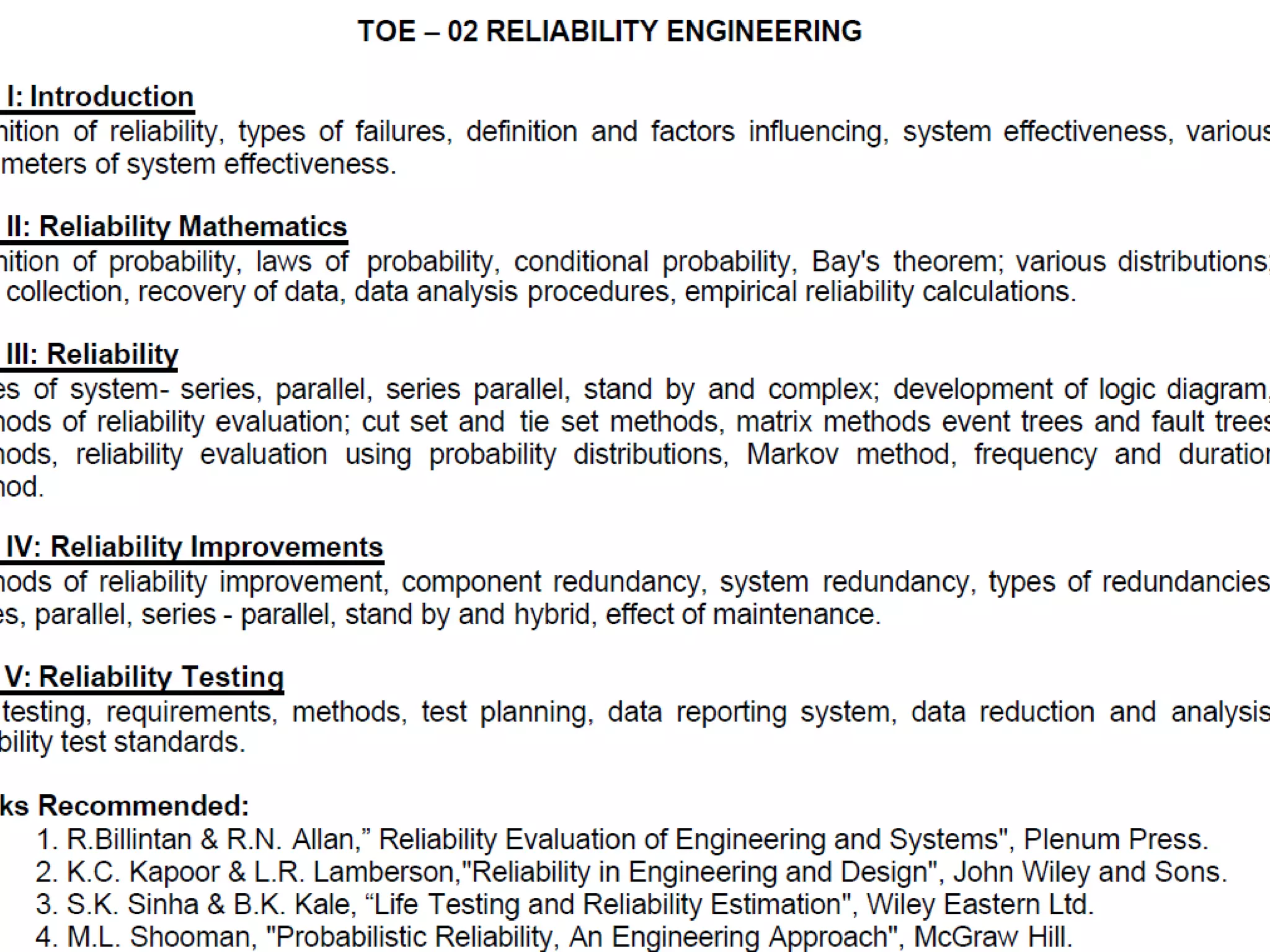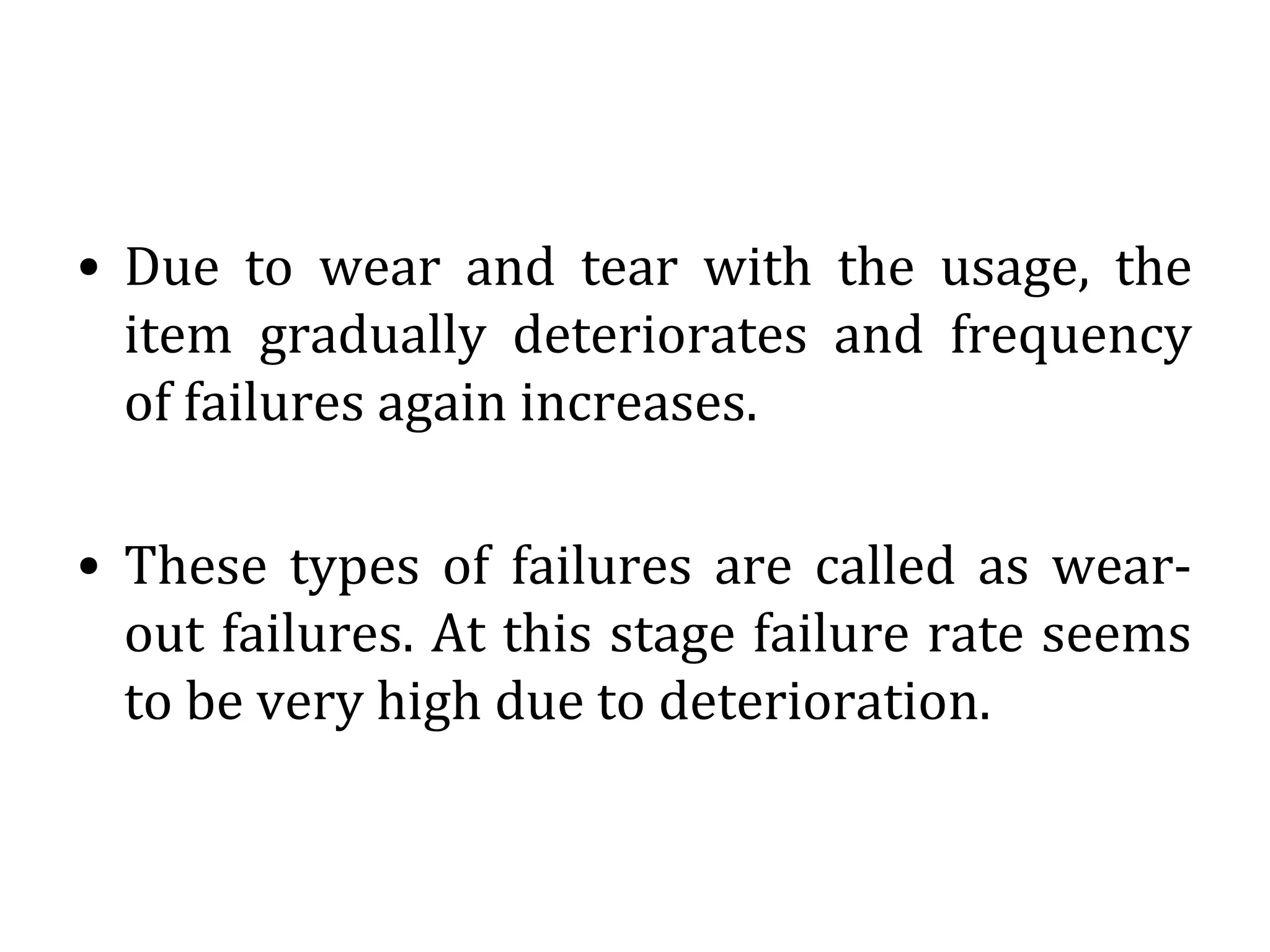Reliability is the ability of a system or component to function under stated conditions for a specified period of time. There are several reasons why failures occur, including design flaws, overstressing, wear and tear, vibration, incorrect specifications, misuse, and operating outside intended environments. The objectives of reliability engineering are to prevent or reduce failures, identify and correct causes of failures, determine ways to cope with failures, and estimate reliability of new designs. Reliability is defined as the probability of success and avoids downtime, repair costs, and warranty claims. Modes of failure include initial infant mortality failures, random stable failures, and wear-out failures over time depicted by a bathtub curve. Reliability influences system
















